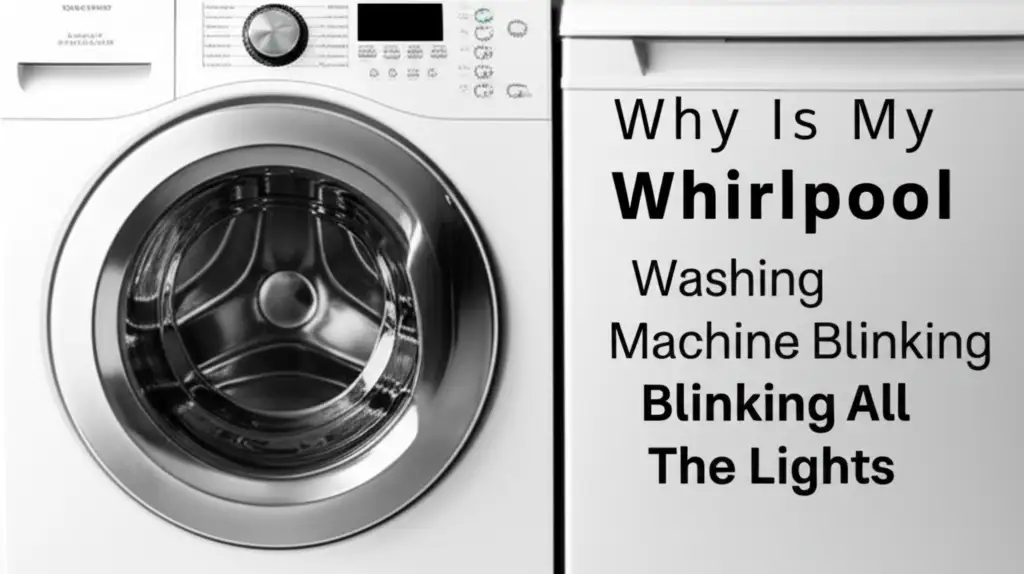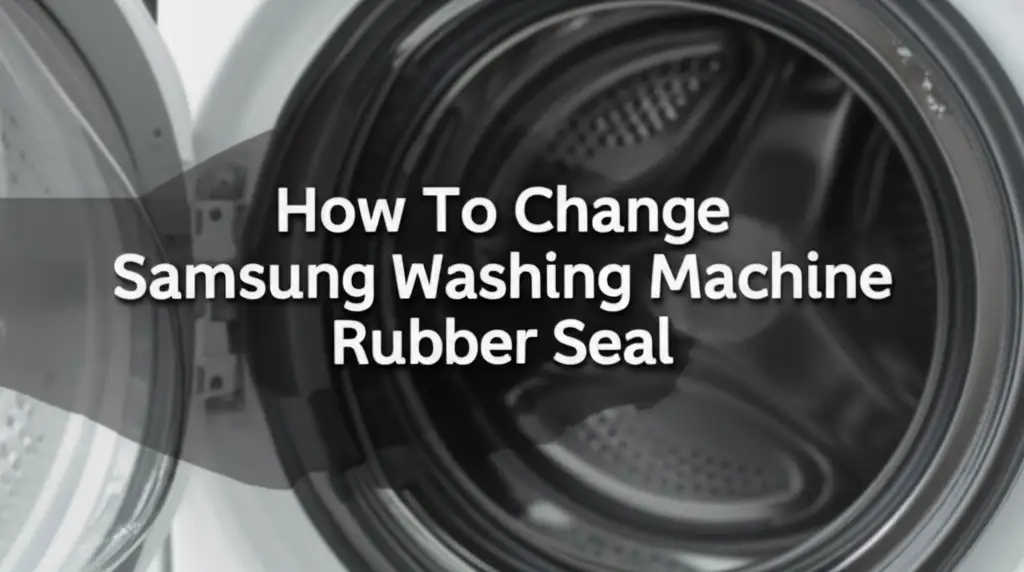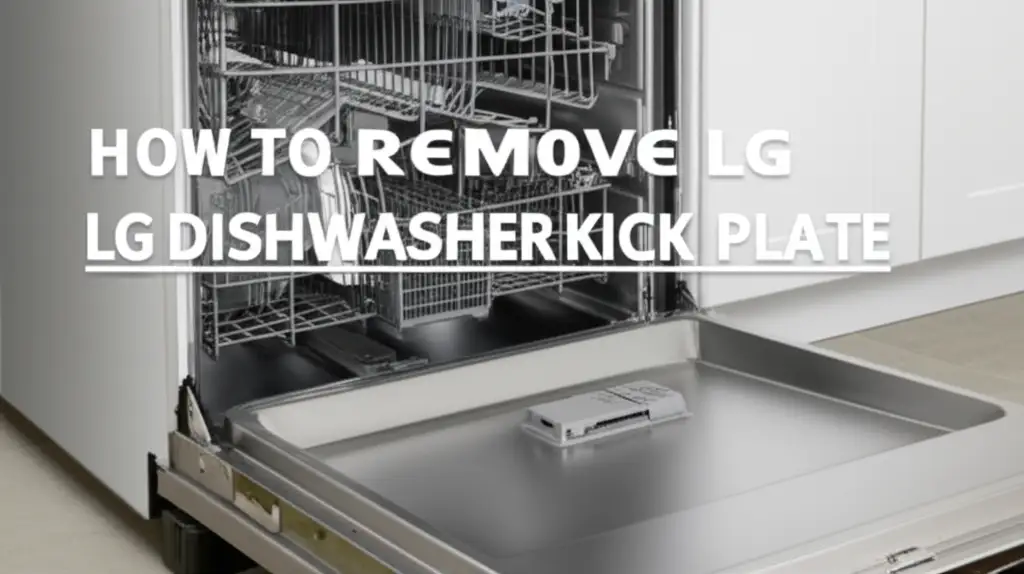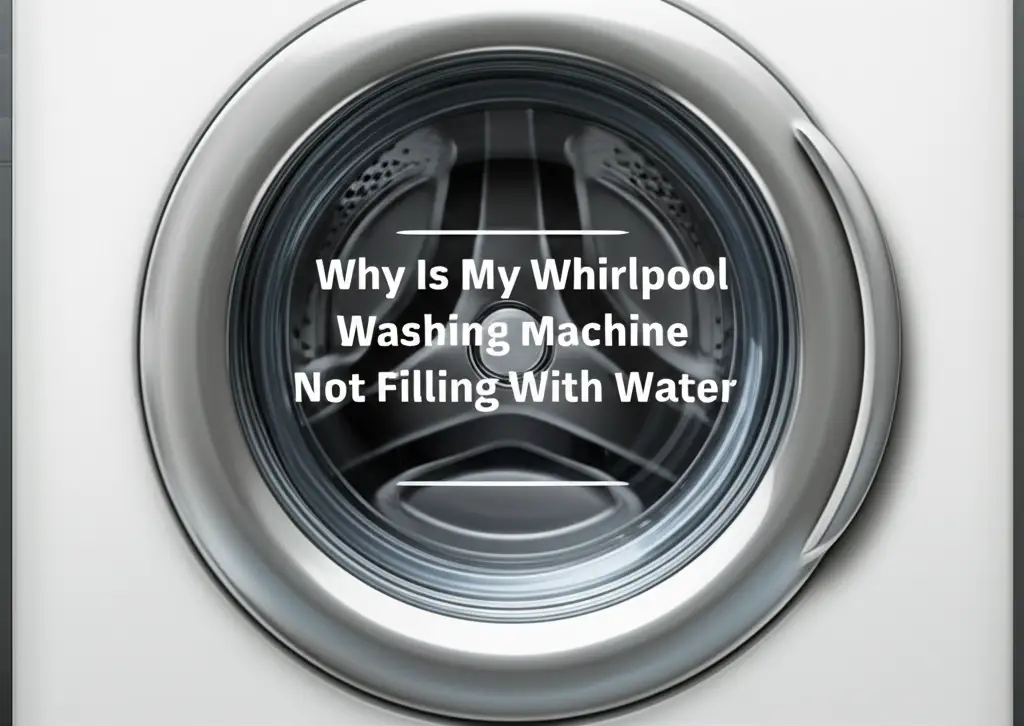· Todd Martin · Appliance Repair · 20 min read
How To Replace Whirlpool Washing Machine Lid Switch
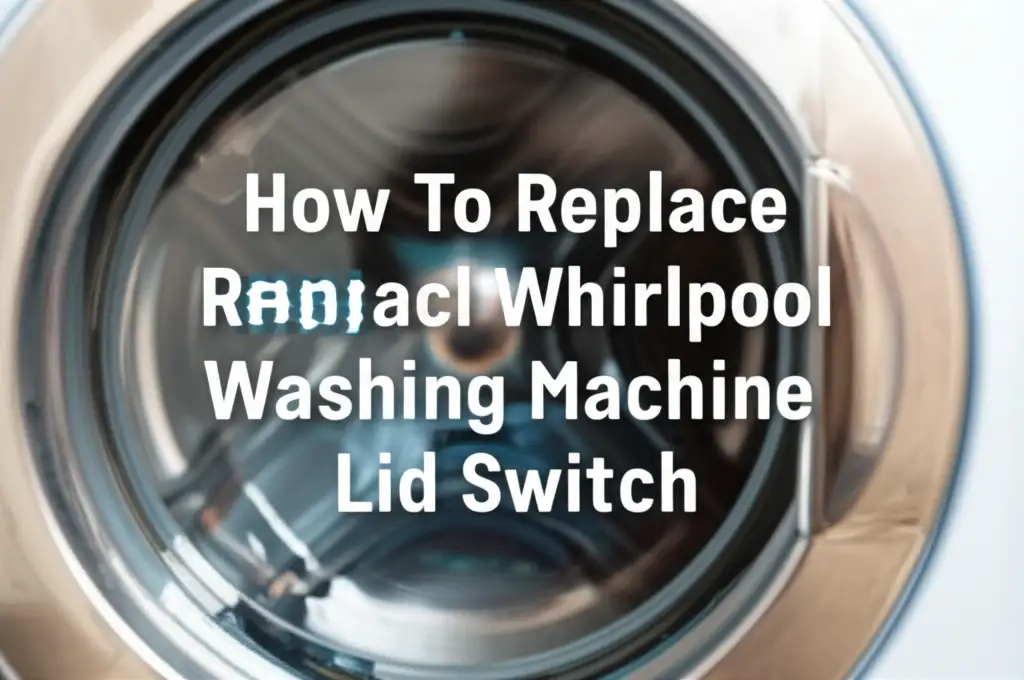
Restore Your Whirlpool Washer: Lid Switch Replacement Guide
Is your Whirlpool washing machine refusing to spin, or perhaps it won’t start a cycle at all? These issues often point to a faulty lid switch. The lid switch is a vital safety component. It stops the washer from operating when the lid is open. When this part fails, your washing machine becomes unusable. You might think about calling a repair technician. However, replacing a Whirlpool washing machine lid switch is a task many homeowners can handle themselves.
I know how frustrating a broken washer can be. It disrupts your laundry routine significantly. You can restore your appliance’s functionality with some basic tools and clear instructions. This guide walks you through each step of the process. We cover everything from understanding the problem to testing your repaired machine. You will learn how to diagnose the issue, safely access the switch, remove the old one, and install a new one. Get ready to save money and gain confidence in your DIY skills.
Takeaway
Replacing a Whirlpool washing machine lid switch is a practical DIY repair for common washer issues.
- Always disconnect power and water before starting work.
- Identify the correct replacement part using your washer’s model number.
- Carefully follow the steps for accessing and removing the old switch.
- Connect the new switch precisely and reassemble your machine.
- Test the washer to confirm proper function after replacement.
A faulty Whirlpool washing machine lid switch often stops the washer from spinning or starting cycles. You can replace it yourself by unplugging the washer, accessing the switch, disconnecting wires, installing a new switch, and reassembling the machine. This repair restores washer operation.
Understanding Your Whirlpool Washing Machine Lid Switch
The lid switch on your Whirlpool washing machine is a critical component. It plays a dual role in both safety and operation. This small part ensures the washer’s internal basket does not spin when the lid is open. This prevents injuries from moving parts. It also signals the control board that the lid is closed. This signal allows the wash, rinse, and spin cycles to begin. Without this signal, the machine might pause, not fill, or refuse to spin.
Lid switches typically wear out over time. Constant opening and closing of the washer lid can stress the switch mechanism. Moisture and detergent residue can also degrade internal components. Sometimes, the small plastic arm that actuates the switch breaks off. This prevents the switch from registering that the lid is closed. Physical impact, like slamming the lid, can accelerate this wear. Understanding these failure points helps you diagnose the problem accurately.
Common Symptoms of a Faulty Lid Switch
When a Whirlpool washing machine lid switch fails, several common symptoms appear. Recognizing these signs helps confirm the lid switch is the problem. This diagnosis saves you time and effort. You avoid fixing parts that are not broken.
- Washer Will Not Start: The most common symptom is the washing machine not starting its cycle at all. You press the start button, but nothing happens. The machine waits for the lid switch signal before starting. If the signal is missing, it will not proceed.
- Washer Fills But Does Not Agitate or Spin: Your machine might fill with water but then stop. It might not move past the wash cycle. It also might fill and wash but never reach the spin cycle. The lid switch must confirm the lid is closed for agitation and spinning.
- Washer Stops Mid-Cycle: The washer might run for a while and then suddenly stop. This often happens during the spin cycle. An intermittent lid switch can lose its connection. This causes the machine to pause or stop as a safety measure.
- Error Codes: Some modern Whirlpool models display specific error codes. These codes indicate a lid switch malfunction. Consult your owner’s manual for specific code meanings. The manual helps you understand the machine’s signals.
- No Indicator Lights: If the machine receives no power or signal from the switch, no lights may appear. This is less common but can occur.
When you notice any of these issues, inspect the lid switch. A quick visual check might reveal a broken arm. A simple test with a multimeter can confirm continuity if you are comfortable with electrical testing. For more insights on why your washer might not be turning on, you can read our guide on why is my Whirlpool washing machine not turning on. This step confirms your diagnosis.
Safety First: Preparing for Lid Switch Replacement
Before you begin any appliance repair, safety must be your top priority. Working with electrical appliances and water carries risks. Ignoring safety steps can lead to electric shock, water damage, or personal injury. I always emphasize this crucial preparation phase. It ensures your well-being and protects your home.
The first step is always to disconnect power. Locate your washing machine’s power cord. Unplug it completely from the wall outlet. Do not just turn off the machine; remove the plug. This eliminates any risk of electrical shock while you work inside the appliance. Next, shut off the water supply. Find the hot and cold water faucets behind your washing machine. Turn both of them off completely. This prevents accidental water leaks while you disconnect components or move the machine.
Gathering the Right Tools
Having the correct tools makes the replacement process smoother and more efficient. I suggest gathering all necessary items before starting. This prevents interruptions during the repair. Most of these tools are common household items.
Here is a list of essential tools you will need:
- Phillips Head Screwdriver: For removing various screws holding panels and components.
- Flathead Screwdriver: Useful for prying, leveraging, or removing some clips.
- Nut Driver Set or Socket Wrench Set: Many appliance parts are secured with nuts or bolts. A set with various sizes will be helpful.
- Pliers (Needle-Nose or Standard): For gripping small parts, disconnecting wire harnesses, or bending tabs.
- Wire Cutters/Strippers (Optional): You might need these if the new switch requires wire splicing, though most replacements are plug-and-play.
- Multimeter (Optional but Recommended): For testing continuity of the old switch or new one. This helps confirm the diagnosis.
- Work Gloves: To protect your hands from sharp edges or grime.
- Towel or Rags: To wipe up any residual water.
- Small Container: For holding screws and small parts. This prevents losing tiny components.
Finding the Correct Replacement Part
Finding the exact replacement lid switch is crucial for a successful repair. Not all Whirlpool lid switches are the same. Different models use different parts. Using the wrong part can lead to installation issues or continued malfunctions.
Here is how to find the correct replacement part:
- Locate Your Washer’s Model Number: The model number is usually on a sticker. Check under the lid, on the back of the console, or on the back of the machine. Write it down accurately.
- Search Online or at a Parts Store: Use the model number to search for the specific lid switch part. Appliance parts websites or local appliance parts stores can help. They often have diagrams to verify the part.
- Note the Part Number: Once you find the correct part, note its part number. This ensures you order or purchase the exact match.
- Consider Genuine Parts: Whenever possible, use genuine Whirlpool replacement parts. These parts ensure compatibility and often offer better longevity.
By taking these preparatory steps, you establish a safe and efficient environment for your repair. This significantly increases your chances of a successful outcome. For more general advice on tackling DIY appliance repairs, check out our article on do it yourself washing machine projects.
Accessing the Lid Switch on Your Whirlpool Washer
Accessing the lid switch on a Whirlpool washing machine typically involves removing parts of the washer’s outer casing. The exact method varies slightly between models. However, the general principle remains the same. You need to expose the internal components to reach the switch. I will describe the most common approach for top-load Whirlpool washers, which usually have the lid switch located under the top panel or inside the cabinet.
Most top-load Whirlpool washers require you to remove the control panel first. Look for two screws, often Phillips head, located at the back of the control panel. These screws secure the panel to the main washer cabinet. Use your screwdriver to carefully remove these screws. Once the screws are out, the control panel usually hinges backward. It might lift up slightly and then tilt back to rest against the wall. Be gentle and avoid pulling on the wires connected to the control panel. These wires are for the various knobs and buttons.
After the control panel is moved, you will see two clips on either side of the washer’s top panel. These clips hold the top panel down. You can usually disengage these clips using a flathead screwdriver. Insert the screwdriver into the gap near the clip and gently pry them forward or outward. Some models may have different fasteners, like additional screws or spring clips. Once the clips are released, you can lift the entire top panel of the washing machine. It should hinge upwards from the back, much like a car hood. This grants you access to the inside of the washer cabinet, where the lid switch is located.
Locating the Lid Switch Assembly
With the top panel lifted, you can now locate the lid switch assembly. On most Whirlpool top-load washers, the lid switch is mounted to the washer’s main cabinet frame, near the front opening where the lid closes. It is usually a small, rectangular plastic component. This component has a lever or arm that extends up into the lid’s strike. When the lid closes, this strike pushes down on the lever, activating the switch.
The switch might be visible immediately once the top panel is open. It could also be hidden slightly by a small bracket or housing. Take a moment to observe how the lid interacts with the switch arm when you slowly open and close the lid. This observation helps you understand the switch’s function. The switch connects to a wiring harness. This harness runs down into the washer’s main body to the control board. Be careful not to pull on these wires. Understanding how to access internal components can also be useful for other repairs, such as when you need to replace your Whirlpool washing machine water inlet valve. Knowing these steps gives you confidence for various washer issues.
Removing the Old Lid Switch
Now that you have accessed the internal components of your Whirlpool washer and located the faulty lid switch, the next step is to carefully remove it. This part of the process requires attention to detail. You need to ensure you disconnect everything correctly. This makes the installation of the new switch much easier. I always advise taking photos with your phone before disconnecting anything. These pictures serve as a valuable reference during reassembly. They show how wires were routed and connected.
Begin by inspecting the electrical connectors attached to the lid switch. Most Whirlpool lid switches use a multi-pin connector that simply unplugs from the switch body. Gently grasp the connector and pull it straight off. Avoid pulling on the wires themselves, as this can damage the wiring harness. Some older models might have individual spade connectors. In such cases, note the color and position of each wire before disconnecting. You can use a marker or tape to label them if necessary. This helps you reattach them to the correct terminals on the new switch. If the wires are simply crimped onto the old switch and need to be cut, ensure you have wire strippers ready for the new installation. However, most modern replacements are plug-and-play.
Once the electrical connections are clear, focus on how the lid switch is mounted. Lid switches are typically secured to the washer’s cabinet frame using one of two common methods. Some are held in place by two or three screws. Use the appropriate screwdriver or nut driver to remove these fasteners. Keep the screws in your small container to avoid losing them. Other lid switches use plastic clips or tabs that snap into place. Gently depress these tabs or pry them with a flathead screwdriver to release the switch from its mounting bracket. Take your time with this step to avoid breaking any surrounding plastic components. Once the screws or clips are disengaged, the old lid switch assembly should lift out easily.
Disposing of the Old Part Responsibly
After removing the old lid switch, you have a broken component. Do not just throw it in the regular trash. Electronic waste contains materials that can harm the environment. Look for local e-waste recycling programs. Many appliance repair shops also accept old parts for proper disposal. Responsible disposal helps protect our planet. It is a small but important step in any DIY repair project. When handling appliance components, remember that other parts, like a GE washing machine drain pump, also require careful handling during replacement. Understanding these processes ensures a clean and effective repair.
Installing the New Whirlpool Lid Switch
With the old, faulty lid switch removed, you are ready to install the new one. This is where your careful observation during disassembly pays off. The installation process is essentially the reverse of removal. I always find it satisfying to see the new part fit perfectly into place. This is a clear sign that you chose the correct replacement part.
First, take the new Whirlpool washing machine lid switch out of its packaging. Compare it to the old switch one last time. Ensure they match in terms of shape, size, and electrical connectors. This final check confirms you have the right part. Position the new switch into the mounting location where the old one sat. If your switch uses screws, align the screw holes on the new switch with the holes on the washer cabinet. Insert the screws and tighten them securely. Do not overtighten, as this can strip the plastic or metal threads. If your switch uses clips or tabs, push the new switch firmly into place until it clicks. The clips should engage and hold the switch snugly.
Next, reconnect the electrical wiring harness. If your old switch used a multi-pin connector, simply push the new connector onto the corresponding pins on the new switch until it clicks firmly into place. If you had individual spade connectors, refer to your notes or photos to ensure each wire connects to its correct terminal. Color-coding usually helps, but double-checking is best. Ensure all connections are snug and secure. Loose connections can cause intermittent problems or prevent the new switch from working at all. Give each wire a gentle tug to confirm it is seated properly.
Checking for Proper Alignment
Before reassembling the entire washing machine, take a moment to check the new lid switch’s alignment. Slowly close the washer lid. Observe how the lid’s strike plate interacts with the switch’s lever or arm. The strike plate should cleanly depress the lever, engaging the switch. There should be no binding or excessive play. The lever should return to its original position when the lid opens. This visual check helps confirm the switch is correctly installed and positioned. Proper alignment is key to its reliable operation. This step also gives you a chance to address any issues before buttoning up the machine.
Reassembling Your Whirlpool Washing Machine and Testing
After installing the new Whirlpool washing machine lid switch, the final steps involve reassembling your appliance and performing a test run. This phase confirms your hard work paid off. It ensures your washer operates correctly again. I find this moment of truth to be the most rewarding part of any DIY repair.
Begin by carefully lowering the washer’s top panel back into position. Ensure the two front clips engage properly. They should snap into place with a clear sound. Make sure the panel sits flush with the rest of the washer cabinet. Then, bring the control panel back to its original position. Align the screw holes at the back of the control panel with the holes on the washer frame. Insert and tighten the screws you removed earlier. Do not overtighten them. Ensure all knobs and buttons are free to move. This completes the physical reassembly of your Whirlpool washer.
Once the machine is physically reassembled, you can reconnect the power and water. First, open the hot and cold water faucets behind the washing machine. Listen for any leaks. Then, plug the washer’s power cord back into the wall outlet. At this point, the washer should have power. You might hear a small hum or see indicator lights turn on. If your Whirlpool washing machine is not filling up with water, even after turning on the faucets, it might be related to other issues like a faulty water inlet valve, or it could be a sign that the lid switch is still not correctly registering, preventing the cycle from starting properly. You can find more information on this topic in our article, why won’t my Whirlpool washing machine fill up with water.
Performing a Test Cycle
The most important part of this stage is testing the washer. This confirms the new lid switch works as intended.
Follow these steps for a thorough test:
- Select a Short Cycle: Choose a short wash cycle, like “Rinse & Spin” or a small load “Quick Wash.” This saves time and water during testing.
- Start the Cycle: Close the lid firmly. Press the “Start” button.
- Observe Initial Fill: The washer should begin to fill with water. Listen for the sound of the water valves opening.
- Check for Agitation: Once enough water has entered, the agitator should start moving. This confirms the machine received the lid closed signal.
- Test the Lid Switch Functionality: During the spin cycle, gently lift the lid a few inches. The washer should immediately stop spinning. This confirms the safety feature of the lid switch is working. Close the lid again, and the spin cycle should resume. This is a crucial test of the new lid switch’s proper operation.
- Complete the Cycle: Allow the washer to complete the entire cycle. Monitor for any unusual noises, leaks, or error codes.
If the washer completes the cycle without issues, congratulations! You have successfully replaced your Whirlpool washing machine lid switch. If problems persist, double-check all your connections. Ensure no wires are loose. If needed, you might use a multimeter to test the continuity of the new switch. This helps confirm the switch itself is functioning. Remember that even with a working lid switch, other issues can cause problems. For example, if your machine is not filling, you might need to investigate the water inlet valve, a process detailed in our guide on how to replace Whirlpool washing machine water inlet valve.
Preventing Future Lid Switch Issues and Maintenance Tips
Replacing your Whirlpool washing machine lid switch gives your appliance new life. It also offers a chance to consider preventing similar issues in the future. While wear and tear are inevitable, certain practices can extend the life of your new lid switch and other washer components. Proactive maintenance is key to appliance longevity. I believe a little care goes a long way in avoiding future breakdowns.
One simple yet effective habit is to close the washing machine lid gently. Avoid slamming the lid shut. Repeated forceful closing puts unnecessary stress on the lid switch mechanism. The small plastic arm or plunger that activates the switch can break or become misaligned over time. A soft close reduces this impact. It helps the switch engage smoothly and consistently. Teach everyone in your household this simple practice. It contributes to the overall health of your washer.
Another important tip is to avoid overloading your washing machine. Overloading places strain on various washer components, including the tub, motor, and suspension. An overloaded tub can cause the machine to vibrate excessively. This vibration can potentially dislodge or damage the lid switch or its wiring. It also affects spin performance, sometimes leading to the machine struggling to achieve full spin speed, which can be perceived as a lid switch issue. Always follow your washer’s capacity guidelines. This prevents stress on the lid switch and other crucial parts.
General Appliance Longevity Tips
Beyond specific lid switch care, regular general maintenance helps your washing machine last longer. These tips improve overall appliance health.
- Regular Cleaning: Periodically clean the washing machine’s interior, including the tub and dispenser drawers. Use appliance cleaner or a vinegar solution. This prevents mold, mildew, and detergent buildup. Buildup can sometimes affect sensor operations or create unpleasant odors.
- Check Hoses and Connections: Inspect water inlet and drain hoses regularly for cracks, bulges, or leaks. Tighten any loose connections. This prevents costly water damage. If you notice your Whirlpool washing machine leaking water from the bottom, it is crucial to address it promptly.
- Level the Washer: Ensure your washing machine is perfectly level. Use a spirit level and adjust the leveling feet as needed. An unbalanced washer vibrates excessively. This vibration puts stress on all internal components, including the lid switch. It can also lead to noisy operation.
- Use Proper Detergent and Amount: Follow detergent manufacturer recommendations. Using too much detergent creates excessive suds. This can clog drains or leave residue. High-efficiency (HE) washers require HE detergent.
- Empty Pockets: Always check clothing pockets before washing. Small objects like coins, keys, or tissues can fall out. These items can clog pumps or damage the tub. They can also get trapped in places that hinder component function.
- Perform a Maintenance Wash: Run an empty hot water cycle with white vinegar or a washer cleaner once a month. This helps flush out residue and keeps the machine fresh.
By following these simple maintenance practices, you extend the life of your Whirlpool washing machine. You also reduce the likelihood of future lid switch failures. This proactive approach saves you money on repairs and gives you a reliable appliance. Investing a little time in care pays off in the long run.
FAQ Section
Q1: How do I know my Whirlpool lid switch is bad?
Your Whirlpool washer might not start, fill, or spin. It might stop mid-cycle. These are common signs. The machine acts as if the lid is open even when it is closed. Sometimes, you can visually see a broken plastic arm on the switch. Modern washers might display an error code related to the lid switch.
Q2: Can I bypass a washing machine lid switch?
Bypassing a washing machine lid switch is strongly discouraged. The lid switch is a critical safety feature. It prevents the washer from operating when the lid is open. Bypassing it creates a serious safety hazard. This could lead to injury from moving parts. It also invalidates your appliance warranty.
Q3: What tools do I need to replace a Whirlpool lid switch?
You will need basic hand tools. These include Phillips and flathead screwdrivers. A nut driver set or socket wrench might be helpful. Pliers can assist with wire connectors. A small container for screws is useful. A multimeter is optional for testing, but recommended for accurate diagnosis.
Q4: How long does it take to replace a lid switch?
Replacing a Whirlpool lid switch typically takes about 30 to 60 minutes. This includes gathering tools and preparing the machine. The time depends on your specific washer model and your DIY experience. First-timers might take a bit longer. Experienced individuals can often complete it quicker.
Q5: Where is the lid switch located on my Whirlpool washing machine?
On most top-load Whirlpool washing machines, the lid switch is located near the front of the tub opening. It is usually mounted to the washer’s main cabinet frame. The switch is positioned so that the washer lid makes contact with its arm or plunger when closed. You will access it by removing the control panel and lifting the top panel.
Q6: Is it worth replacing a lid switch myself?
Absolutely. Replacing a Whirlpool washing machine lid switch yourself is highly cost-effective. The part itself is inexpensive. You save money on labor costs from a professional technician. It is also a straightforward repair. This repair builds your confidence in tackling other home appliance issues.


